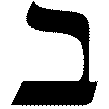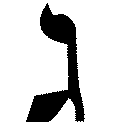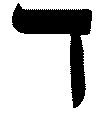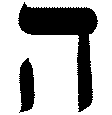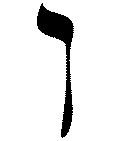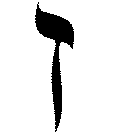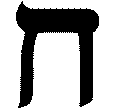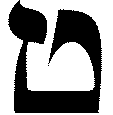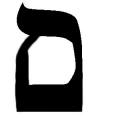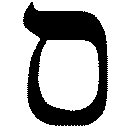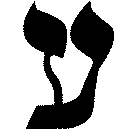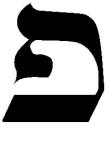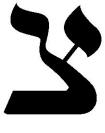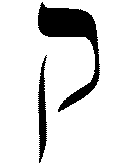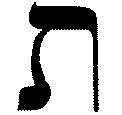Beit Yeshua
Hebrew Aleph-Bet
The Letters
A good place to start learning the Hebrew Aleph-Beth is through song.
Here's one by Curtis & Carolyn Loftin to the tune "Shalom Aleichem"To Hear the "Aleph-Bet" Song
CLICK HERE(The song is only a simple audio version recorded on our computer)
The Aleph-Bet Song - Lyrics
by Curtis & Carolyn Loftin
Tune: "Shalom Aleichem"
Aleph, Bet, Vet, Gimel, Dalet, Hey, Vav, Zayin - Chet, Tet, Yod,
Kaf, Lamed, Mem, Nun, Samech, Ayin, Peh, Feh,
Tsade, Qof, Resh, Shin Sin, Tov
Now you've learned the Hebrew Aleph-Beth,
You can read Torah in Ivrit (Hebrew).
Twenty-two letters written by the hand of God,
Giving Torah to lead the way.
Shalom Aleichem, Shalom B'Yeshua,
Shabbat Shalom B'Adonainu.INTRODUCTION: 1. The Hebrew language has 22 letters - all consonants.
2. Five of the Hebrew letters have a different form when they appear at the end of a word.
3. Hebrew is written from right to left.
4. There are no vowels in Hebrew, but a modern system of vowel points (dots & dashes) is occasionally used in school books and prayer books.
5. These dots and dashes are written above, below or inside the letter, in ways that do not alter the spacing of the line.
6. There are no vowel points used in newspapers, magazines, signs and other printed material in Israel today.Hebrew 4 Christians has a wonderful website designated for the Aleph-Bet & Language at:
http://www.hebrew4christians.com/Grammar/Unit_One/Aleph-Bet/aleph-bet.htmlHebrew Letter Letter
NameAlternate Letter Letter
NameFinal Form (Sofit) Letter
NameSound Numerical Value
Aleph(Silent) 1
Bet
B
V2
GimmelG 3
DaletD 4
HeyH 5
VavV 6
ZayinZ 7
ChetCh
(Not like chair)
More like
Kh8
TetT 9
YodY 10
Kaf
Haf
Kaf
SofitK
H20
LamedL 30
Mem
Mem
SofitM 40
Nun
Nun
SofitN 50
SamechS 60
Ayin(Silent) 70
Pey
Fey
Fey
SofitP
F80
Tsadie
Tsadie
SofitTs or Tz 90
QofK 100
ReshR 200
Shin
SinSh
C300
TavT 400 Additional Information
Some Letters - Two Sounds Note that some Hebrew letters have two pronunciations. Bet, Kaf, and Pay have a "hard" sound (the first sound in the chart above) and a "soft" sound (the second sound). In pointed texts, these letters have dots in the center when they are to be pronounced with the hard sound. (See the examples in the chart above). Shin is pronounced "sh" when it has a dot over the right branch and "s" when it has a dot over the left branch.
Vav, usually a consonant pronounced as a "v," is sometimes a vowel pronounced "oo" or "oh." When it is pronounced "oo", pointed texts have a dot in the middle. When it is pronounced "oh", pointed texts have a dot on top. Some Letters - Two Forms Some of the Hebrew letter have two forms. Kaf, Mem, Nun, Pay and Tsadi all are written differently when they appear at the end of a word than when they appear in the beginning or middle of the word. The version used at the end of a word is referred to as Kaf Sofit (Final Kaf), Mem Sofit (Final Mem), etc. The version of the letter on the left in the chart above (in black) is the final version. In all cases except the Mem Sofit, the final version has a long tail VOWELS: Like most early Semitic alphabetic writing systems, the Alef-Bet has no vowels. People who are fluent in the language do not need vowels to read Hebrew, and most newspapers, magazines, or books of general use written in Hebrew are written without vowels. Siddurim (Prayer Books) and Tanach (Torah, Neviyim, and Kethubim ) are the exceptions to the rule. Around the 8th century, the Rabbis realized the need for aids to pronunciation, so they developed a system of dots and dashes called Nikud (points). These dots and dashes are written above, below or inside the letter, in ways that do not alter the spacing of the line. Text containing these markings is referred to as "pointed" text
The line of text above would be pronounced in Sephardic pronunciation, (which is what most people today use): V-ah-hav-ta L'ray-a(ch)a ka-moh-(ch)a. (And you shall love your neighbor as yourself. Vayikra - Leviticus 19:18) TRANSLITERATION: The process of writing Hebrew words in the Roman (English) alphabet is known as transliteration. Transliteration is more an art than a science, and opinions on the correct way to transliterate words vary widely. This is why the Jewish festival of lights (in Hebrew, Chet-Nun-Kaf-Hay) is spelled Chanukah, Channukkah, Hanuka, and many other interesting ways. Each spelling has a legitimate phonetic and orthographic basis; none is right or wrong.
NUMERICAL VALUE of the ALEPH-BET: Each letter in the Aleph-Bet has a numerical value. These values can be used to write numbers, as the Romans used some of their letters (I, V, X, L, C, M) to represent numbers.






